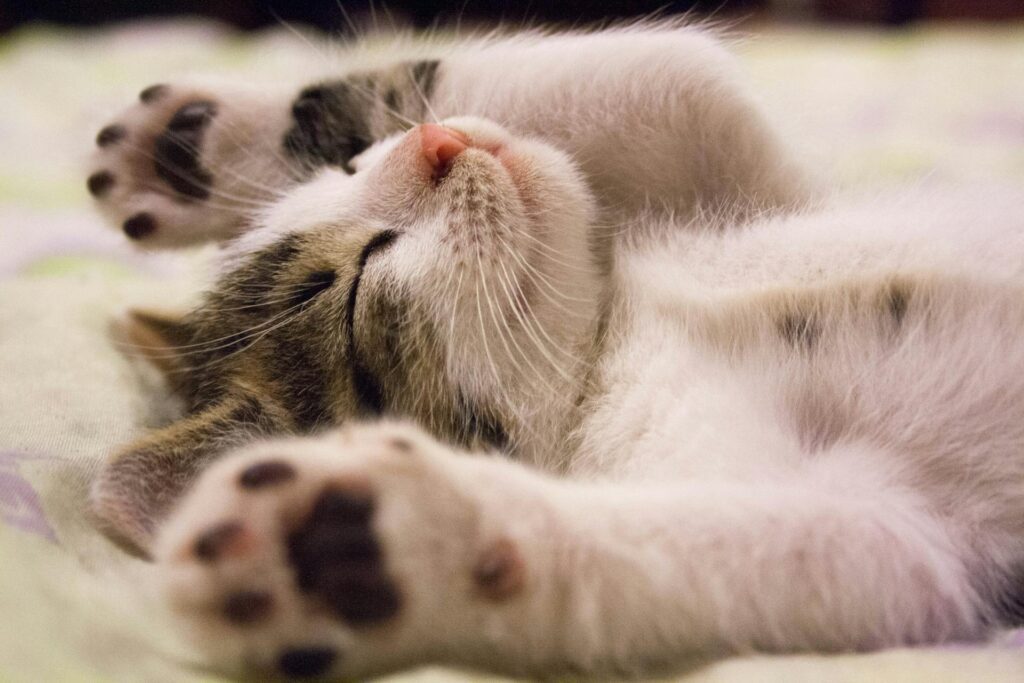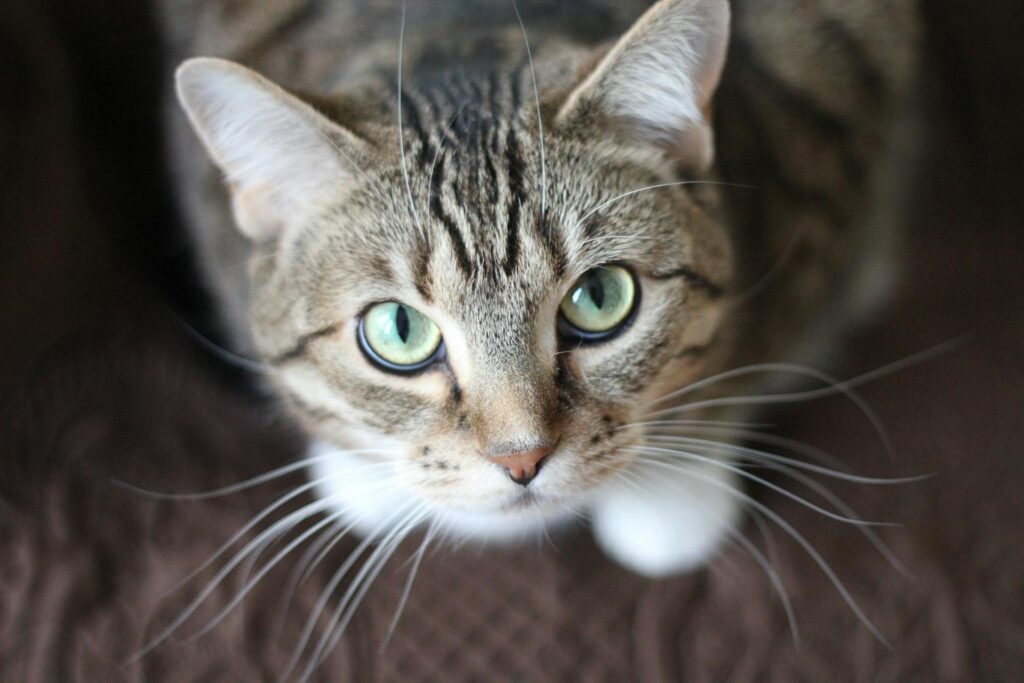20 Amazing Facts About Cats
Cats, those mysterious and captivating creatures that grace our homes with their presence, have a world full of interesting, quirky, and downright bizarre facts surrounding them. Let’s dive into their fascinating universe with a collection of interesting facts about cats that range from their ancient history to their peculiar behaviors and impressive abilities.

Fun Facts About Cats: Part I
1. Did you know cats have been both worshipped and vilified throughout history? In ancient Egypt, cats were revered to such an extent that harming one was considered a crime punishable by death. Fast forward a few centuries, and during the Middle Ages in Europe, they were associated with witches and bad luck, a stark contrast to their divine status in Egypt.
2. Cats can make over 100 different sounds. While dogs might seem more vocal with their barks, whines, and howls, cats actually have a wider range of vocalizations. From meows to purrs, hisses, and beyond, they use this extensive vocabulary to communicate with humans and each other.
3. A cat’s purr can be a sign of both contentment and distress. While we often associate purring with a happy cat curled up on a lap, cats also purr when they’re frightened, injured, or even while giving birth. It’s thought that purring may have healing properties due to its low-frequency vibrations.
4. Cats have a specialized collarbone (clavicle) that allows them to always land on their feet. This is part of what’s known as the “righting reflex.” The righting reflex begins to appear at 3 weeks of age and is perfected by 7 weeks. However, this doesn’t mean cats are immune to injury from falls.
5. Speaking of falls, did you hear about the cat that survived a 32-story fall from a New York City apartment building? While certainly not the norm, this incredible story highlights the durability and the nine lives myth of our feline friends.
6. Another interesting fact about cats is that they have a unique way of walking called “direct registering.” Their back paws step almost exactly in the same place as the front paws did beforehand, minimizing noise and visible tracks. This technique is also a testament to their precision and grace, qualities that make them skilled hunters.
7. The world’s oldest known pet cat was found in a 9,500-year-old grave on the Mediterranean island of Cyprus. This predates Egyptian art depicting cats by over 4,000 years, pushing back the timeline of human-feline cohabitation significantly.
8. Cats have a special reflective layer behind their retinas called the tapetum lucidum, which amplifies light, allowing them to see in near darkness. This is why their eyes can appear to glow in the dark—a feature that’s as eerie as it is fascinating.
9. A cat’s whiskers aren’t just for show. They’re highly sensitive tactile hairs called vibrissae, which cats use to detect changes in their surroundings, measure openings, and even sense the presence of prey. These whiskers are so sensitive they can detect the slightest change in airflow.
10. Did you know cats can’t taste sweetness? A mutation in a key taste receptor has left them without the ability to taste sweet flavors, which might explain why your cat turns its nose up at sugary treats.

Interesting Facts About Cats: Part II
11. The record for the longest cat ever is held by Stewie, a Maine Coon, who measured an astonishing 48.5 inches from the tip of his nose to the tip of his tail. Maine Coons are known for their size, but Stewie was truly a gentle giant among cats.
12. Cats have a specialized structure in their inner ear called the vestibular apparatus, which is why they have such an exceptional balance and orientation. This also contributes to their incredible agility and their ability to always land on their feet.
13. The concept of a cat flap (also known as a cat door) is believed to have been invented by none other than Isaac Newton. While working on his experiments at the University of Cambridge, he was constantly interrupted by his cat wanting in and out, leading him to cut a hole in the door.
14. A group of cats is called a clowder. You might be familiar with terms like “pack” for dogs or “flock” for birds, but cats have their own collective noun, which is as unique as their personalities.
15. Cats can run up to 30 miles per hour (48 kilometers per hour) over short distances. This burst of speed makes them formidable hunters, capable of catching prey before it realizes what’s happening.
16. The frequency of a cat’s purr, which is between 25 and 150 Hertz, can improve bone density and promote healing. This phenomenon has led some researchers to investigate the potential therapeutic benefits of purring for human bone and muscle health.
17. Cats have a third eyelid called a haw. This thin cover closes from the side and appears when a cat’s eye is partially open, helping to protect the eye and keep it moist. If you see your cat’s third eyelid, it can be a sign of illness.
18. An interesting fact about cats #18: the ability to squeeze into tight spaces is well known, but did you know they can fit through any opening the size of their head? Their flexible bodies and lack of a rigid collarbone allow them to contort and fit through surprisingly small spaces.
19. Cats use their tails for communication, expressing emotions ranging from interest and excitement to fear and aggression. The position and movement of their tail can tell you a lot about their mood and intentions.
20. Finally, cats have contributed to the safety of astronauts. The principles of how cats right themselves in mid-air have been studied and applied to the development of spacecraft orientation technology, proving once again that cats are not just pets, but creatures of endless fascination and utility.
Frequently Asked Questions About Cats
Why do cats purr? Cats purr for various reasons, not just contentment. Purring can also indicate pain, fear, or stress. It’s believed to be a self-soothing mechanism, and interestingly, the vibrations from purring may have healing properties, promoting bone and tissue repair.
Can cats see in complete darkness? No, cats cannot see in absolute darkness. However, they have superior night vision compared to humans. Their eyes have a high number of rod cells and a reflective layer behind the retina, which amplifies light, allowing them to see in very low light conditions.
Why do cats knead with their paws? Kneading, sometimes called “making biscuits,” is a behavior rooted in kittenhood. Kittens knead their mother’s belly to stimulate milk flow. Adult cats continue this behavior, showing contentment, comfort, or marking their territory with the scent glands in their paws.
How do cats always land on their feet? Cats have a flexible spine and no collarbone, which allows them to twist their bodies in mid-air if they fall. This ability, called the righting reflex, is how cats often land on their feet from falls. However, this doesn’t mean they’re immune to injury from high falls.
Why do cats bring dead animals to their owners? This behavior is thought to be a display of their hunting skills or an attempt to teach their humans how to hunt, just as they would do for their kittens. It’s a sign of trust and affection, though not always appreciated by their human companions.
Do cats understand their names? Studies suggest cats can recognize their names or the sound of their names. However, their response to being called is often less about acknowledgment and more about deciding whether to respond based on their interest or mood.
Why do cats hate water? Not all cats hate water, but many do. This aversion is thought to be because their fur does not dry quickly and can become uncomfortably heavy when wet. However, some breeds, like the Turkish Van, are known to enjoy swimming.
Can cats be trained? Yes, cats can be trained using positive reinforcement, such as treats or praise. While they may not be as receptive to training as dogs, cats can learn a variety of tricks and behaviors, including using a toilet or performing agility exercises.
Why do cats have whiskers? Whiskers are highly sensitive tactile hairs that help cats navigate their environment. They can detect changes in air currents and sense the presence of objects or walls, aiding in night navigation and tight space maneuvering.
How long do cats typically live? The lifespan of a cat can vary widely depending on factors like breed, health, and whether they live indoors or outdoors. Indoor cats typically live longer, often reaching 15 years or more, while outdoor cats face more risks and may have shorter lives.






